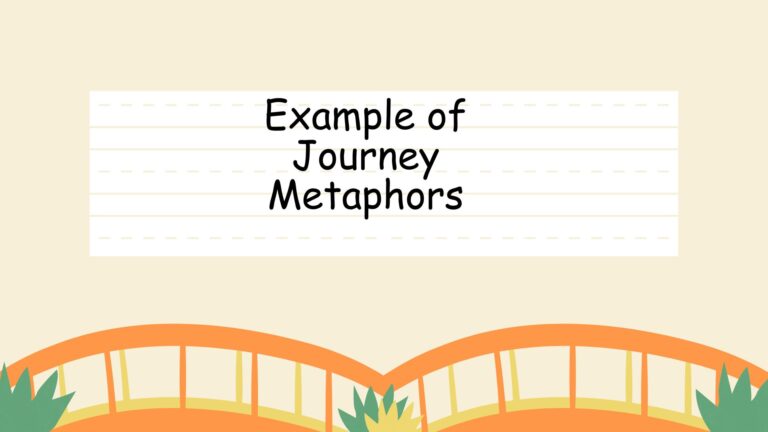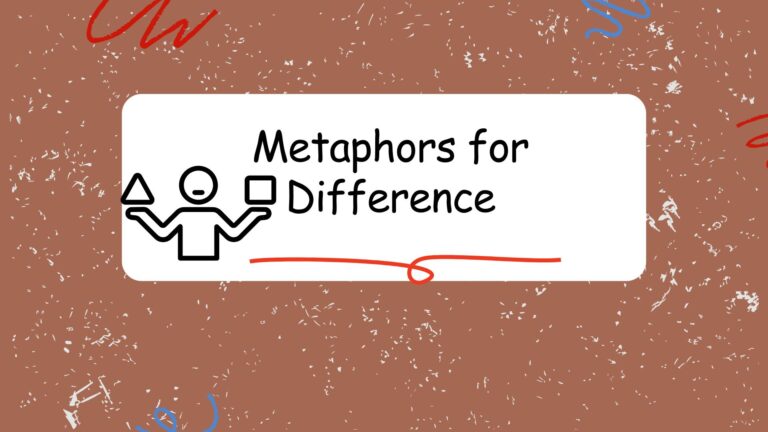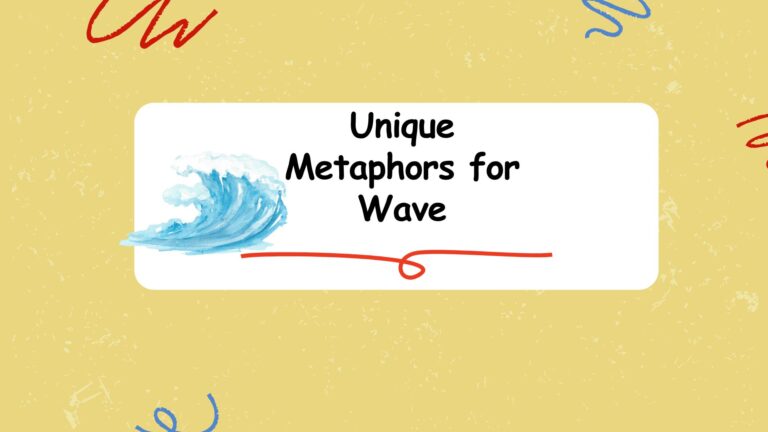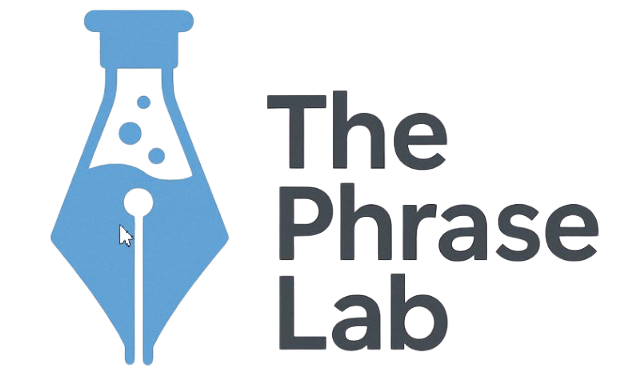
Metaphors for Support With New Examples: A Comprehensive Guide
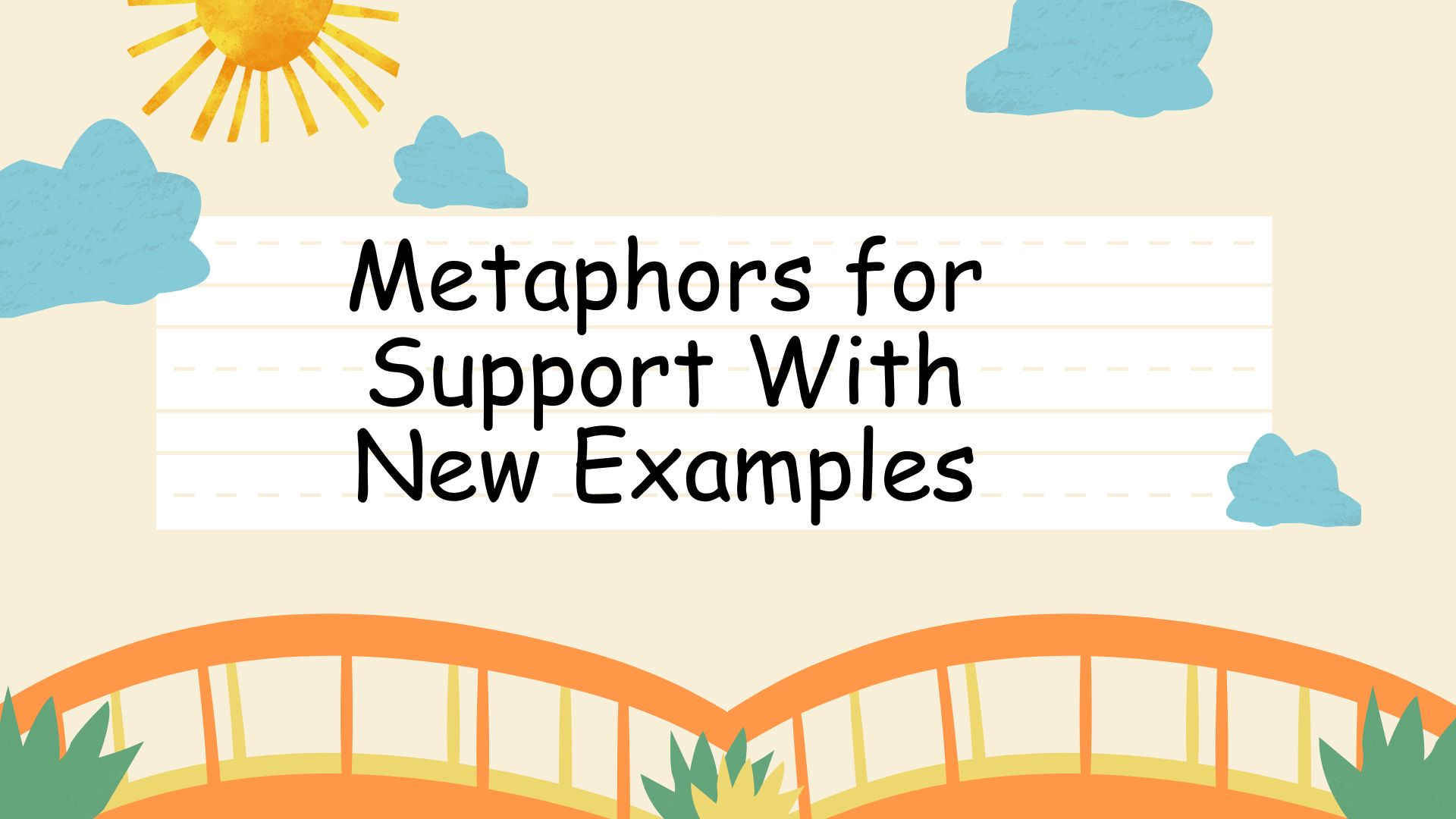
Metaphors are powerful tools in the English language, allowing us to convey complex ideas by relating them to something familiar. When it comes to describing support, metaphors can add depth and nuance, making our communication more vivid and impactful. Understanding these metaphors not only enhances your comprehension of English but also enriches your ability to express yourself creatively and effectively. This article is designed for English language learners of all levels, from beginners looking to expand their vocabulary to advanced speakers aiming to refine their rhetorical skills.
Table of Contents
- Introduction
- Definition of Metaphors for Support
- Structural Breakdown
- Types and Categories of Support Metaphors
- Examples of Metaphors for Support
- Usage Rules for Metaphors of Support
- Common Mistakes
- Practice Exercises
- Advanced Topics
- FAQ
- Conclusion
Definition of Metaphors for Support
A metaphor is a figure of speech that directly compares two unrelated things, often to suggest a shared quality or characteristic. Unlike similes, which use “like” or “as,” metaphors imply that one thing is another. Metaphors for support are those that use this comparison to describe the act of providing assistance, encouragement, or resources to someone or something. These metaphors can relate support to physical structures, emotional anchors, or even abstract concepts, making the idea of support more tangible and understandable.
The function of metaphors for support is primarily to enhance understanding and create a stronger emotional connection with the concept of support. They help us visualize and internalize the idea of being supported or of providing support to others. By using metaphorical language, we can move beyond literal descriptions and tap into deeper layers of meaning.
The contexts in which metaphors for support are used are incredibly diverse. They appear in everyday conversations, literature, business communications, and academic writing. Anywhere you need to describe how someone or something is being helped or sustained, metaphors can add richness and clarity to your expression.
Structural Breakdown
The structure of a metaphor typically involves two key elements: the tenor and the vehicle. The tenor is the subject being described (in this case, support), and the vehicle is the object or concept used to represent the tenor (e.g., a bridge, a foundation). The effectiveness of a metaphor lies in the connection between the tenor and the vehicle – how well the vehicle illuminates and clarifies the tenor.
For example, in the metaphor “He was a pillar of strength during the crisis,” the tenor is “he” (the person providing support), and the vehicle is “pillar of strength.” The connection is that a pillar provides structural support, and the person provided emotional and practical support during the crisis. The success of this metaphor depends on the audience understanding the role of a pillar and how that relates to the person’s actions.
The implied similarity is crucial. A good metaphor for support draws on shared characteristics between the act of supporting and the chosen image. This could be stability, reliability, or resilience. The more resonant the connection, the more effective the metaphor.
Types and Categories of Support Metaphors
Metaphors for support can be categorized based on the type of support they describe. Here are some common categories:
Physical Support Metaphors
These metaphors relate support to physical structures or actions that provide stability. Examples include foundations, pillars, anchors, and scaffolding. They often emphasize the tangible nature of support.
Emotional Support Metaphors
These metaphors focus on the emotional aspects of support, such as comfort, encouragement, and understanding. They might use images of warmth, light, or safe havens. Examples include a shoulder to cry on, a beacon of hope, and a comforting blanket.
Financial Support Metaphors
These metaphors describe the provision of financial resources. They often involve images of flow, growth, or stability. Examples include a lifeline, a financial cushion, and seed money.
Abstract Support Metaphors
These metaphors connect support to intangible concepts like ideas, principles, or systems. They might use images of frameworks, networks, or ecosystems. Examples include the backbone of the organization, the cornerstone of the project, and the bedrock of their beliefs.
Examples of Metaphors for Support
To illustrate the different categories of support metaphors, here are several examples:
Physical Support Examples
The following table provides 30 examples of metaphors related to physical support. These metaphors often use imagery of structures, stability, and tangible assistance.
| Metaphor | Explanation | Example Sentence |
|---|---|---|
| A pillar of strength | Someone who provides unwavering support. | During the crisis, she was a pillar of strength for her family. |
| A solid foundation | A strong base of support. | Their relationship is built on a solid foundation of trust and respect. |
| An anchor | Something that provides stability. | His faith was an anchor during difficult times. |
| Scaffolding | Temporary support to help something grow. | The mentorship program provided scaffolding for the young entrepreneurs. |
| A crutch | Something that provides temporary assistance. | He used the medication as a crutch to get through his anxiety. |
| A safety net | Protection against failure or hardship. | The government provided a safety net for those who lost their jobs. |
| A lifeline | Something that provides essential support. | The donation was a lifeline for the struggling charity. |
| A bulwark | A defensive wall or protection. | Education is a bulwark against ignorance. |
| A buttress | A structure that supports a wall. | His friends acted as a buttress during his recovery. |
| A prop | Something that supports or sustains. | Her family was a prop that helped her succeed. |
| A backbone | The main support or structure. | Honesty is the backbone of their business. |
| A bedrock | A fundamental principle or foundation. | Mutual respect is the bedrock of their partnership. |
| A keystone | The central stone in an arch that holds it together. | Communication is the keystone of a healthy relationship. |
| A framework | A basic structure underlying a system or concept. | The constitution provides the framework for the government. |
| A platform | A raised level surface on which people or things can stand. | The conference provided a platform for new ideas. |
| A shield | Protection against harm. | His parents were a shield against the outside world. |
| A fortress | A fortified place. | Her home was a fortress where she felt safe. |
| A haven | A safe place. | The library was a haven for students during exams. |
| A refuge | A place of safety. | The church offered refuge to the homeless. |
| A sanctuary | A sacred place offering protection. | The forest was a sanctuary for the wildlife. |
| A foothold | A secure position from which further progress can be made. | Getting the internship gave him a foothold in the industry. |
| A stepping stone | Something that helps you make progress. | This job is just a stepping stone to a better career. |
| A launching pad | A place from which something is launched. | The university was a launching pad for his career. |
| A springboard | Something that provides impetus or momentum. | The award was a springboard for her success. |
| A prop | Something or someone that gives support to someone who is weak. | His belief in God was a strong prop to him during his illness. |
| A stanchion | An upright bar or post providing support. | The handrail was supported by stanchions to ensure safety. |
| A truss | A framework of beams supporting a roof or other structure. | The bridge was built with strong trusses to withstand heavy loads. |
| A shore | A prop placed under something to prevent it from falling. | They used shores to support the old building during renovations. |
| A brace | A support or clamp that holds something in place. | He wore a brace on his knee to help it heal. |
| A post | A strong piece of timber or metal set upright as a support. | The fence was held up by sturdy wooden posts. |
These metaphors help visualize the concept of support by associating it with tangible, physical objects that provide stability and protection.
Emotional Support Examples
The following table contains 30 examples of metaphors relating to emotional support. These metaphors often invoke feelings of comfort, understanding, and encouragement.
| Metaphor | Explanation | Example Sentence |
|---|---|---|
| A shoulder to cry on | Someone who offers comfort and sympathy. | She was always a shoulder to cry on when I was feeling down. |
| A beacon of hope | Something that provides guidance and optimism. | His positive attitude was a beacon of hope during the difficult times. |
| A comforting blanket | Something that provides warmth and security. | Her kind words were like a comforting blanket on a cold day. |
| A listening ear | Someone who pays attention and understands. | He always offered a listening ear when I needed to talk. |
| A ray of sunshine | Someone who brings joy and positivity. | Her smile was a ray of sunshine in his life. |
| A warm embrace | A comforting hug. | She gave him a warm embrace to show her support. |
| A gentle hand | Kind and caring assistance. | He guided her with a gentle hand through the process. |
| A steady presence | Someone who is consistently supportive. | Her mother was a steady presence in her life. |
| A safe harbor | A place of safety and security. | Their home was a safe harbor for their children. |
| An emotional cushion | Something that softens the impact of difficult situations. | Her friends provided an emotional cushion when she went through her divorce. |
| A wellspring of encouragement | A source of constant motivation. | His mentor was a wellspring of encouragement. |
| A guiding light | Someone who provides direction and wisdom. | Her teacher was a guiding light. |
| An empathetic heart | Someone who understands and shares your feelings. | She had an empathetic heart. |
| A source of strength | Someone or something that provides resilience. | His family was his source of strength. |
| A voice of reason | Someone who offers rational advice. | She was the voice of reason. |
| A pillar of hope | Someone who inspires optimism. | He was a pillar of hope. |
| A well of compassion | A source of deep sympathy and understanding. | Her kindness was a well of compassion. |
| A balm for the soul | Something that soothes emotional pain. | Music was a balm for the soul. |
| A hand to hold | Comforting presence during difficult times. | She offered him a hand to hold. |
| A heart of gold | Someone who is kind and generous. | She had a heart of gold. |
| A guardian angel | Someone who protects and guides. | He was a guardian angel. |
| A gentle breeze | Someone who brings calmness. | Her presence was like a gentle breeze. |
| A warm fire | A source of comfort and warmth. | Their friendship was a warm fire. |
| A haven of peace | A place of tranquility. | The garden was a haven of peace. |
| A well-wisher | Someone who wants you to succeed. | He was a sincere well-wisher. |
| A morale booster | Someone who improves spirits. | Her visit was a morale booster. |
| A comfort zone | A safe and familiar place. | She created a comfort zone. |
| A source of inspiration | Someone who motivates others. | He was a source of inspiration. |
| A light in the darkness | Someone who offers hope in despair. | She was a light in the darkness. |
| A friend in need | Someone who helps during tough times. | He was a friend in need. |
These metaphors evoke feelings of warmth, safety, and understanding, highlighting the intangible yet profound impact of emotional support.
Financial Support Examples
The following table provides 20 examples of metaphors related to financial support. These metaphors often use imagery of resources, growth, and stability.
| Metaphor | Explanation | Example Sentence |
|---|---|---|
| A financial cushion | Savings that provide security. | They had a financial cushion to fall back on. |
| Seed money | Initial investment to start a business. | The grant provided seed money for the project. |
| A cash cow | A reliable source of income. | The product became a cash cow for the company. |
| A revenue stream | A source of income. | They diversified their revenue streams. |
| An economic engine | A driver of economic growth. | The industry is an economic engine for the region. |
| A fiscal stimulus | Government spending to boost the economy. | The government announced a fiscal stimulus. |
| A budget surplus | More income than expenses. | The country reported a budget surplus. |
| A financial lifeline | Critical financial assistance. | The loan was a financial lifeline to keep the business afloat. |
| A funding stream | A source of financial resources. | The charity relies on multiple funding streams. |
| An investment portfolio | A collection of assets. | He built a diverse investment portfolio. |
| A rainy day fund | Savings for unexpected expenses. | They started a rainy day fund. |
| A nest egg | Savings for retirement. | She built a sizable nest egg. |
| A financial buffer | Protection against financial shocks. | They created a financial buffer. |
| A golden parachute | A generous severance package. | The executive received a golden parachute. |
| A piggy bank | A place to save money. | He started a piggy bank. |
| A vault of riches | A source of wealth. | The country was a vault of riches. |
| A money tree | A source of easy money. | He wished he had a money tree. |
| An economic safety net | Support during financial hardship. | The program provided an economic safety net. |
| A treasure trove | A collection of valuable things. | The museum was a treasure trove. |
| A financial reservoir | A reserve of funds. | The company had a financial reservoir. |
These metaphors illustrate how financial support can provide stability, growth, and security, using imagery that is easily relatable to economic concepts.
Abstract Support Examples
The following table contains 20 examples of metaphors related to abstract support. These metaphors often connect support to intangible concepts like ideas, principles, or systems.
| Metaphor | Explanation | Example Sentence |
|---|---|---|
| The backbone of the organization | The main support system. | The IT department is the backbone of the organization. |
| The cornerstone of the project | The most important element. | Collaboration is the cornerstone of the project. |
| The bedrock of their beliefs | The fundamental principles. | Honesty is the bedrock of their beliefs. |
| The framework of the agreement | The structure of the agreement. | The treaty provides the framework of the agreement. |
| The linchpin of the strategy | The essential element. | Communication is the linchpin of the strategy. |
| The glue that holds the team together | The element that unifies the team. | Trust is the glue that holds the team together. |
| The engine of innovation | The driving force behind innovation. | Research is the engine of innovation. |
| The anchor of the community | The stabilizing force. | The local library is the anchor of the community. |
| The foundation of democracy | The fundamental principles of democracy. | Freedom of speech is the foundation of democracy. |
| The skeleton of the plan | The basic structure. | The outline provided the skeleton of the plan. |
| The sinews of commerce | The supporting structures of commerce. | Transportation is the sinews of commerce. |
| The nervous system of the city | The network of communication and infrastructure. | The subway system is the nervous system of the city. |
| The lifeblood of the company | The essential element for survival. | Cash flow is the lifeblood of the company. |
| The heart of the matter | The central issue. | The real problem is the heart of the matter. |
| The pulse of the nation | The current sentiment. | Social media is the pulse of the nation. |
| The soul of the movement | The core values. | Equality is the soul of the movement. |
| The spirit of the law | The intended meaning. | We must understand the spirit of the law. |
| The compass of morality | The guiding principles. | Ethics is the compass of morality. |
| The rudder of the ship | The guiding force. | Leadership is the rudder of the ship. |
| The pillars of society | The supporting structures. | Education and healthcare are the pillars of society. |
These metaphors help conceptualize abstract support by relating it to fundamental structures, processes, and values that are essential for the functioning of systems and organizations.
Usage Rules for Metaphors of Support
Using metaphors effectively requires careful consideration of context and audience. Here are some guidelines:
- Clarity: Ensure the connection between the tenor and the vehicle is clear. The metaphor should enhance understanding, not confuse it.
- Relevance: Choose metaphors that are appropriate for the context and audience. A metaphor that resonates with one group may not work for another.
- Originality: While common metaphors can be effective, try to use original metaphors to make your writing more engaging and memorable.
- Consistency: Avoid mixing metaphors or using too many metaphors in a short space, as this can create a confusing and cluttered effect.
- Avoid Clichés: Steer clear of overused metaphors that have lost their impact. Try to find fresh and imaginative ways to express your ideas.
Common Mistakes
Here are some common mistakes to avoid when using metaphors for support:
| Incorrect | Correct | Explanation |
|---|---|---|
| The project was a concrete balloon. | The project was a solid foundation. | A concrete balloon is nonsensical. A solid foundation is a fitting metaphor for support. |
| He was a feather in the storm. | He was an anchor in the storm. | A feather is easily blown away, while an anchor provides stability. |
| Her words were a cold fire. | Her words were a warm embrace. | Cold fire is contradictory. A warm embrace conveys comfort. |
| The budget was a leaky bucket. | The budget was a financial cushion. | A leaky bucket implies loss, while a financial cushion suggests security. |
| The plan was a house of cards. | The plan was a solid framework. | A house of cards is unstable, while a solid framework is supportive. |
Practice Exercises
Test your understanding of metaphors for support with these exercises:
Exercise 1: Identifying Metaphors
Identify the metaphor for support in each sentence.
| Question | Answer |
|---|---|
| 1. Her encouragement was a lifeline during the difficult project. | Lifeline |
| 2. The team’s collaboration was the cornerstone of their success. | Cornerstone |
| 3. His parents were a shield against the harsh realities of the world. | Shield |
| 4. The grant served as seed money for the innovative startup. | Seed money |
| 5. The community center is a haven for the local residents. | Haven |
| 6. He was a pillar of strength for his family during the crisis. | Pillar of strength |
| 7. Their friendship was a warm fire on a cold winter night. | Warm fire |
| 8. Education is the bedrock of a prosperous society. | Bedrock |
| 9. The government provided a safety net for the unemployed. | Safety net |
| 10. The coach was a guiding light for the young athletes. | Guiding light |
Exercise 2: Completing Sentences
Complete each sentence with an appropriate metaphor for support.
| Question | Answer |
|---|---|
| 1. His advice was a __________, helping me navigate the complex situation. | guiding star |
| 2. The company’s profits served as a __________, ensuring its long-term stability. | financial cushion |
| 3. Her unwavering belief in me was a __________, giving me the courage to pursue my dreams. | source of strength |
| 4. The mentorship program provided __________ for the aspiring entrepreneurs. | scaffolding |
| 5. The community rallied together, becoming a __________ for those affected by the disaster. | lifeline |
| 6. The constitution is the __________ of the nation’s legal system. | framework |
| 7. Their dedication to customer service is the __________ of their business. | backbone |
| 8. The scholarship was a __________ for students from low-income families. | stepping stone |
| 9. Her positive attitude was a __________ during the stressful project. | ray of sunshine |
| 10. The new policy provided a __________ for struggling businesses. | economic safety net |
Exercise 3: Creating Your Own Metaphors
Create your own metaphor for support for each scenario.
| Scenario | Example Metaphor |
|---|---|
| 1. Describing the support a teacher provides to their students. | The teacher was a gardener, nurturing the seeds of knowledge in their students. |
| 2. Describing the support a friend provides during a difficult time. | My friend was a lighthouse, guiding me safely through the stormy seas of my emotions. |
| 3. Describing the support a company provides to its employees. | The company was a strong tree, providing shade and shelter to its employees. |
| 4. Describing the support a government provides to its citizens. | The government acted as a dam, protecting its citizens from the flood of economic hardship. |
| 5. Describing the support a community provides to its members. | The community was a quilt, each member a patch contributing to the warmth and comfort of the whole. |
| 6. Describing the support a mentor provides to a mentee. | The mentor acted as a compass, guiding the mentee through uncharted territories of their career. |
| 7. Describing the support a family provides to a child. | The family was a nest, providing warmth, security, and a safe place to grow for the child. |
| 8. Describing the support a therapist provides to a patient. | The therapist was a skilled architect, helping the patient rebuild their shattered emotional foundation. |
| 9. Describing the support a coach provides to an athlete. | The coach was a whetstone, sharpening the athlete’s skills and pushing them to their full potential. |
| 10. Describing the support a book provides to a reader. | The book was a map, guiding the reader through new worlds and perspectives. |
Advanced Topics
For advanced learners, consider exploring the following:
- Extended Metaphors: Develop a single metaphor throughout an entire piece of writing.
- Mixed Metaphors: Analyze the effect of combining different metaphors and when it might be appropriate.
- Historical Context: Research the origins and evolution of common metaphors for support.
- Cultural Variations: Investigate how metaphors for support differ across cultures and languages.
FAQ
- What is the difference between a metaphor and a simile?
A metaphor directly compares two unlike things by stating that one is the other (e.g., “He is a rock”). A simile compares two things using “like” or “as” (e.g., “He is as strong as a rock”).
- Why use metaphors for support?
Metaphors can make abstract concepts more concrete and understandable, create a stronger emotional connection, and add richness and depth to your writing.
- How do I choose the right metaphor?
Consider your audience, the context, and the specific type of support you want to describe. Choose a metaphor that is clear, relevant, and resonant.
- Can I use multiple metaphors in a sentence?
While it’s possible, it’s generally best to avoid using too many metaphors in a short space, as this can create a confusing effect. Focus on using one or two well-chosen metaphors.
- What are some common metaphors for support to avoid?
Avoid clichés and overused metaphors that have lost their impact, such as “a shoulder to cry on” or “a light at the end of the tunnel.” Try to find fresh and original ways to express your ideas.
- How can I improve my use of metaphors?
Read widely, pay attention to how other writers use metaphors, and practice creating your own metaphors. Get feedback from others on your writing.
- Are metaphors only used in creative writing?
No, metaphors are used in various forms of writing, including business, academic, and everyday communication. They can enhance clarity and impact in any context.
- What makes a metaphor effective?
An effective metaphor is clear, relevant, original, and creates a strong connection between the tenor and the vehicle. It should enhance understanding and add depth to the writing.
Conclusion
Metaphors for support are powerful tools for enhancing communication and creating deeper understanding. By mastering the art of using these metaphors, English language learners can express themselves more vividly and effectively. Whether you are describing physical, emotional, financial, or abstract support, the right metaphor can transform your writing and speaking, making your message more memorable and impactful. Continue to practice and explore the rich possibilities that metaphorical language offers, and you will find your ability to communicate improving significantly.

